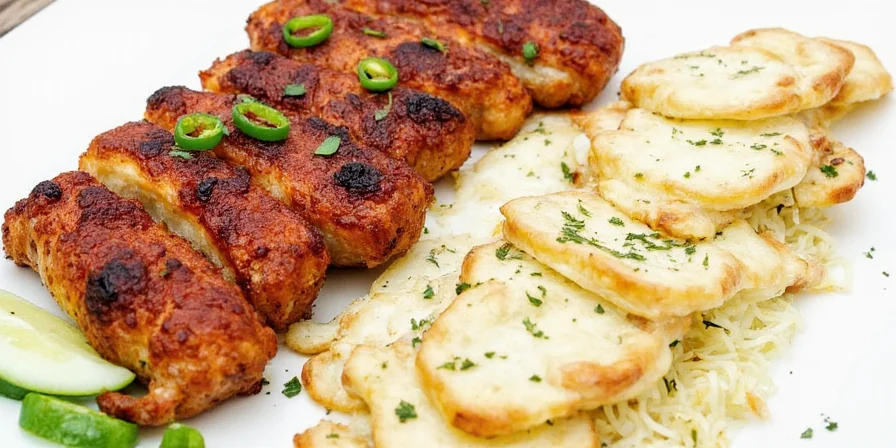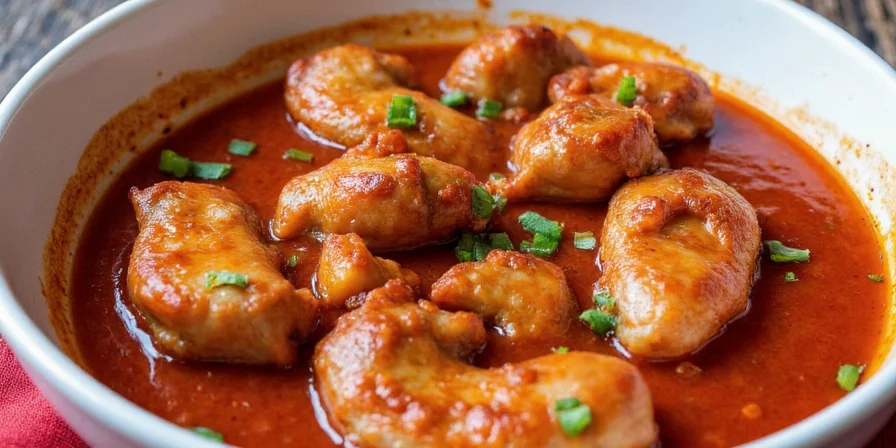Marinades Decoded: The Spicy Secret Behind Flavorful Dishes
If you've ever sunk your teeth into a perfectly seasoned piece of grilled chicken or a tender cut of marinated steak, you’ve tasted the magic of marinades. But what exactly are marinades, and why do they play such a crucial role in spicing up our culinary world?
In this blog post, we’ll dive deep into the science and soul of marinades—how they work, what makes them tick (or sizzle), and how to create your own flavor bombs at home.
Table of Contents
- What Are Marinades?
- The Building Blocks of a Great Marinade
- The Science Behind Marinades
- Types of Marinades Around the World
- 5 Pro Tips for Perfecting Your Marinade Game
- Common Marinade Mistakes and How to Avoid Them
- Spice Up Plants: Vegan & Vegetarian Marinades
- Conclusion
What Are Marinades?
The term 'marinade' comes from the French word "mariner," which means “to soak” or “to pickle.” Originally used to preserve seafood in briny solutions, modern marinades have evolved into flavorful liquid blends that enhance taste and texture.

A **marinade** is a mixture of acids, oils, spices, and aromatics used to coat, flavor, and sometimes tenderize food before cooking. Think of it as a spa day for your meat—or tofu, if you’re plant-based—where every inch gets pampered with flavor.
The Building Blocks of a Great Marinade
A classic marinade typically has three essential components:
- Acid: Breaks down proteins, allowing flavors to penetrate deeper. Examples include lemon juice, vinegar, yogurt, and wine.
- Oil: Helps carry fat-soluble flavors and keeps the food moist during cooking. Common choices are olive oil, sesame oil, or avocado oil.
- Flavoring Agents: This includes herbs, spices, garlic, ginger, chili, soy sauce, honey, etc.—your personal signature!
| Component | Purpose | Examples |
|---|---|---|
| Acid | Tenderizes and infuses flavor | Lemon, lime, vinegar, yogurt |
| Oil | Carries flavor and retains moisture | Olive oil, coconut oil, sesame oil |
| Flavoring Agents | Adds depth and personality | Garlic, cumin, paprika, cilantro, chili |
The Science Behind Marinades
You might think marinades just sit on top of the meat like a cozy blanket—but nope! They get under the skin (literally) and start breaking things down.
- Proteins + Acid = Magic: Acids denature surface proteins, making it easier for flavors to seep in. However, too much acid for too long can make your food mushy—like when chicken turns rubbery after an all-day bath in lemon juice.
- Oil Seals in Flavor: Oil acts as a shield against high heat while also carrying those aromatic compounds deeper into the food.
- Spices and Herbs Bring Personality: Ingredients like smoked paprika, turmeric, and cayenne don’t just add flavor—they contribute color, aroma, and even health benefits.
Types of Marinades Around the World
From fiery Caribbean jerk to fragrant Indian tandoori, marinades reflect cultural traditions and regional spice palettes. Here’s a quick tour of global marinade styles:

| Cuisine | Main Ingredients | Signature Dish |
|---|---|---|
| Mediterranean | Olive oil, lemon, oregano, garlic | Greek Souvlaki |
| Mexican | Chili powder, lime, cumin, garlic | Adobo Chicken |
| Korean | Gojujang, soy sauce, sesame oil, pear | Bulgogi Beef |
| Indian | Yogurt, garam masala, turmeric, ginger | Tandoori Chicken |
| Caribbean | Scotch bonnet, thyme, allspice, vinegar | Jerk Chicken |
5 Pro Tips for Perfecting Your Marinade Game
You don't need a Michelin star to make restaurant-worthy marinades. Just follow these five tips:
- Use a Ziplock Bag or Airtight Container: It ensures even coating and prevents fridge odors from invading your meal.
- Don’t Over-Marinate Delicate Proteins: Fish and shrimp can turn rubbery if left too long. Stick to 30 minutes max.
- Double Up: Use Part of the Marinade as a Sauce: Reserve a portion before adding raw meat to use later as a finishing sauce (after boiling to kill bacteria).
- Dry Off Before Cooking: Wipe off excess marinade before grilling or pan-searing to avoid steaming instead of searing.
- Experiment Freely: Swap out ingredients. Try apple cider vinegar instead of white, mango instead of pear in bulgogi, or coconut milk instead of yogurt in Indian dishes.
Common Marinade Mistakes and How to Avoid Them
We’ve all been there—excited to make the perfect marinated steak only to end up with something bland, soggy, or worse, unsafe. Let's avoid the most common marinade mishaps:
| Mistake | Why It’s Bad | Solution |
|---|---|---|
| Over-marinating tough cuts | Meat becomes mushy or dry | Stick to 4–8 hours for red meats; 2–4 for poultry |
| Using the same marinade on raw and cooked foods | Risk of cross-contamination | Save some marinade before adding to raw meat |
| Not balancing flavors | Too sweet, sour, salty, or bitter | Taste and adjust before applying |
| Ignoring salt content | Too much salt draws moisture out | Season after marinating or reduce salt in marinade |
Spice Up Plants: Vegan & Vegetarian Marinades
Think marinades are only for meat lovers? Think again. Whether you're working with tofu, tempeh, eggplant, mushrooms, or cauliflower, a good marinade can elevate plant-based dishes to the next level.
- Tofu Tango: Soy sauce, maple syrup, sriracha, sesame oil, minced garlic
- Eggplant Expresso: Olive oil, balsamic vinegar, smoked paprika, rosemary, black pepper
- Portobello Party: Red wine vinegar, tamari, thyme, cracked black pepper, olive oil
- Chickpea Firecracker: Chili powder, cumin, lemon juice, tahini, coriander
Conclusion
So, now you know: marinades aren’t just about soaking meat in sauce—they’re a symphony of chemistry, culture, and creativity. From tenderizing tough cuts to transforming humble veggies into flavor powerhouses, mastering marinades is one of the easiest ways to upgrade your cooking game.
Next time you fire up the grill or preheat the oven, take a few extra minutes to craft a killer marinade. You’ll be rewarded with layers of flavor that will leave everyone asking, “What’s your secret?” Spoiler: it’s not a secret anymore.
Happy marinating—and remember, spice doesn’t come just from chili… it comes from confidence, curiosity, and a dash of experimentation.










 浙公网安备
33010002000092号
浙公网安备
33010002000092号 浙B2-20120091-4
浙B2-20120091-4